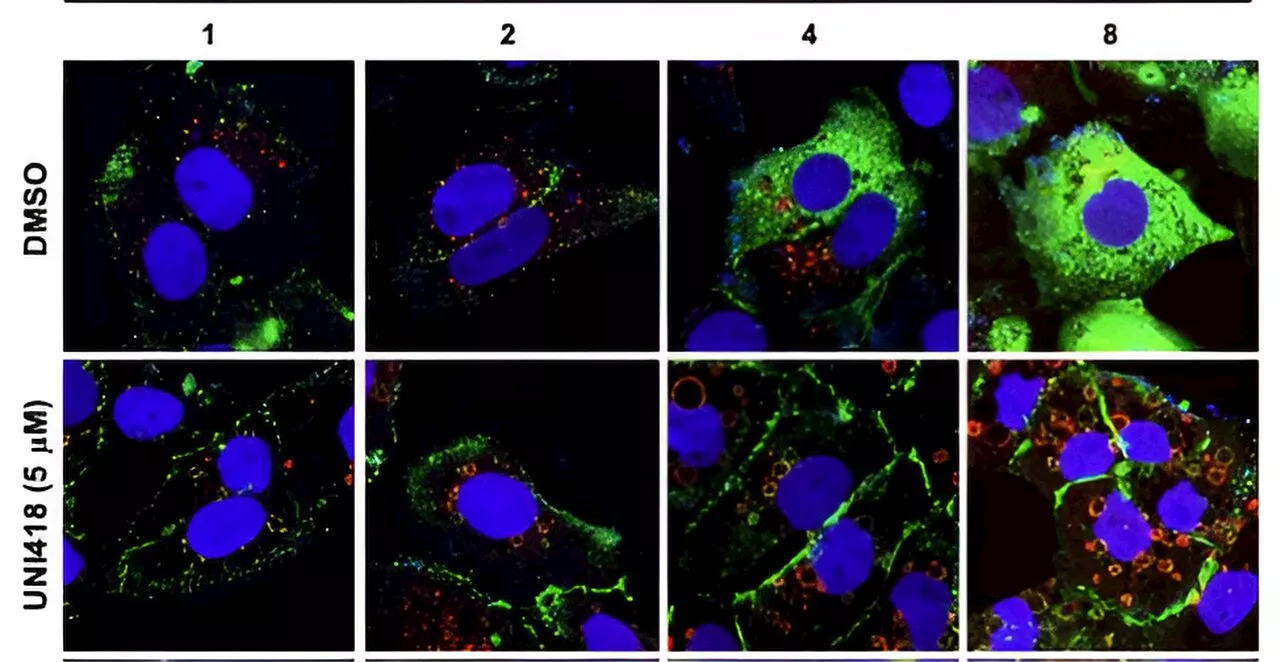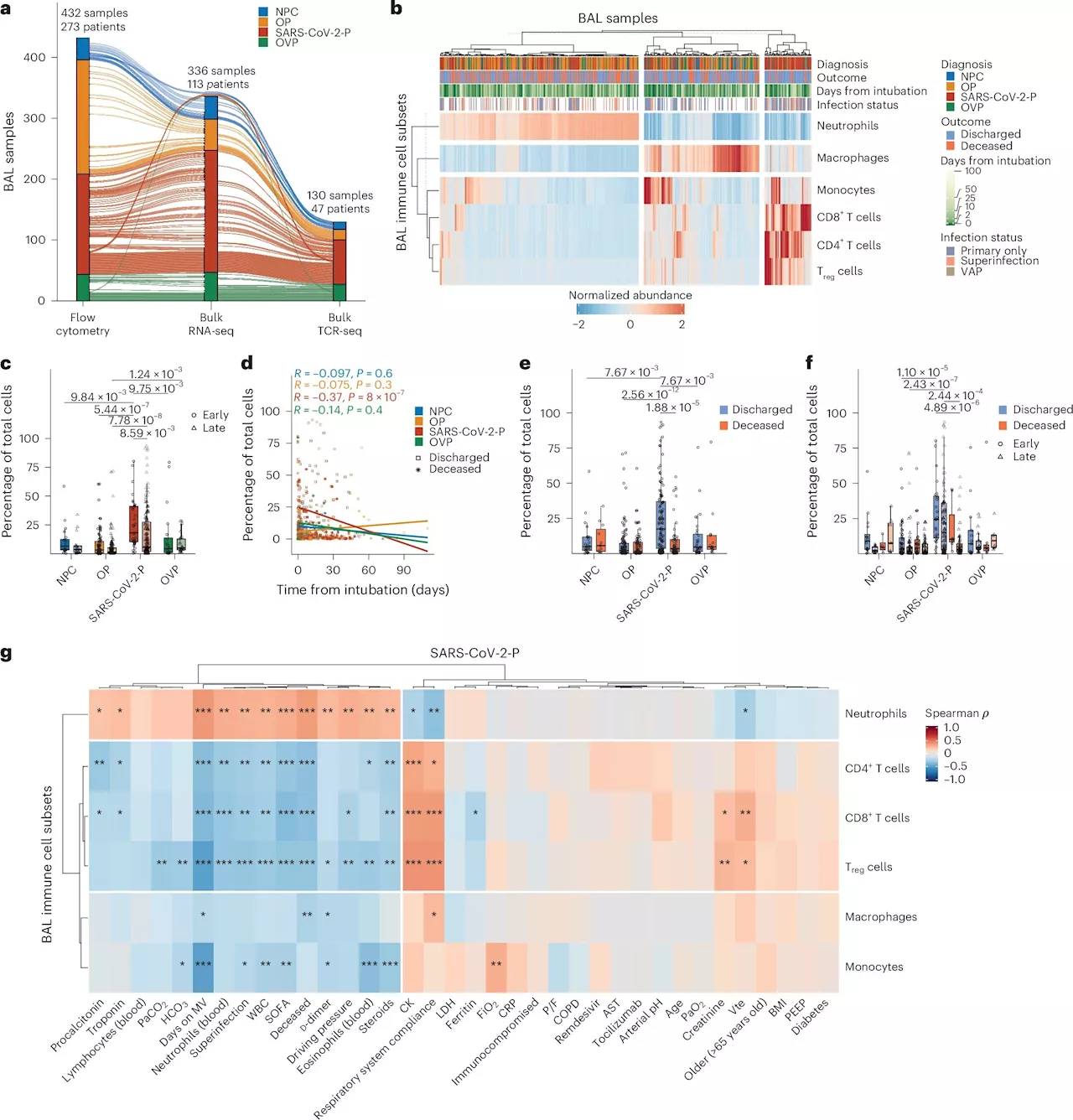A new international collaborative study provides a list of the wildlife species present at the market from which SARS-CoV-2, the virus responsible for the COVID-19 pandemic, most likely arose in late 2019. The study is based on a new analysis of metatranscriptomic data released by the Chinese Center for Disease Control and Prevention (CDC).
Cell PressSep 20 2024 A new international collaborative study provides a list of the wildlife species present at the market from which SARS -CoV-2, the virus responsible for the COVID-19 pandemic, most likely arose in late 2019. The study is based on a new analysis of metatranscriptomic data released by the Chinese Center for Disease Control and Prevention .
On January 1, 2020, after the animals were removed and just hours after the market was closed, investigators from the Chinese CDC went to the market to collect samples. They swabbed the floors, walls, and other surfaces of the stalls; they came back days later to focus on surfaces in stalls selling wildlife, such as a cage and carts used to move animals, and then also collected samples from the drains and sewers.
"Many of the key animal species had been cleared out before the Chinese CDC teams arrived, so we can't have direct proof that the animals were infected," Débarre says. "We are seeing the DNA and RNA ghosts of these animals in the environmental samples, and some are in stalls where SARS-CoV-2 was found too. This is what you would expect under a scenario in which there were infected animals in the market.
"In this paper, we show that the sequences linked to the market are consistent with a market emergence," Débarre says. "The main diversity of SARS-CoV-2 was in the market from the very beginning."
Cell Covid-19 DNA Pandemic Research RNA SARS SARS-Cov-2 Virus
United Kingdom Latest News, United Kingdom Headlines
Similar News:You can also read news stories similar to this one that we have collected from other news sources.
 Obesity increases risk of contracting COVID-19 after exposure to SARS-CoV-2Researchers reveal that obesity also increases the risk of contracting COVID-19 following exposure to SARS-CoV-2.
Obesity increases risk of contracting COVID-19 after exposure to SARS-CoV-2Researchers reveal that obesity also increases the risk of contracting COVID-19 following exposure to SARS-CoV-2.
Read more »
 Study finds higher SARS-CoV-2 risk in obese individualsA study finds an increased risk of developing a productive SARS-CoV-2 infection in obese people. Obesity is known to predict worse outcomes and higher mortality for those with COVID-19. Masanori Aikawa and colleagues sought to determine if obesity also affected the likelihood of getting ill in the first place.
Study finds higher SARS-CoV-2 risk in obese individualsA study finds an increased risk of developing a productive SARS-CoV-2 infection in obese people. Obesity is known to predict worse outcomes and higher mortality for those with COVID-19. Masanori Aikawa and colleagues sought to determine if obesity also affected the likelihood of getting ill in the first place.
Read more »
 Study unveils novel treatment for blocking SARS-CoV-2 entry into cellsIn light of the ongoing threat posed by new viruses following the emergence of severe acute respiratory syndrome coronavirus 2 (SARS-CoV-2), which led to the COVID-19 pandemic, new antiviral drugs continue to be developed to effectively block viral entry into the human body.
Study unveils novel treatment for blocking SARS-CoV-2 entry into cellsIn light of the ongoing threat posed by new viruses following the emergence of severe acute respiratory syndrome coronavirus 2 (SARS-CoV-2), which led to the COVID-19 pandemic, new antiviral drugs continue to be developed to effectively block viral entry into the human body.
Read more »
 T-cell responses influence patient outcomes in SARS-CoV-2 pneumonia, study findsNorthwestern Medicine investigators have identified distinct T-cell responses associated with patient outcomes in unvaccinated individuals with severe SARS-CoV-2 pneumonia, according to findings published in Nature Immunology.
T-cell responses influence patient outcomes in SARS-CoV-2 pneumonia, study findsNorthwestern Medicine investigators have identified distinct T-cell responses associated with patient outcomes in unvaccinated individuals with severe SARS-CoV-2 pneumonia, according to findings published in Nature Immunology.
Read more »
 Study reveals population-wide immune setpoint for SARS-CoV-2 antibodiesResearchers discovered that SARS-CoV-2 antibody levels in the Dominican Republic converge to a population-wide immune setpoint, regardless of individual vaccination or infection history.
Study reveals population-wide immune setpoint for SARS-CoV-2 antibodiesResearchers discovered that SARS-CoV-2 antibody levels in the Dominican Republic converge to a population-wide immune setpoint, regardless of individual vaccination or infection history.
Read more »
 Study reveals how SARS-CoV-2 triggers diabetes by destroying pancreatic cellsResearchers from Weill Cornell Medicine have used a cutting-edge model system to uncover the mechanism by which SARS-CoV-2, the virus that causes COVID-19, induces new cases of diabetes, and worsens complications in people who already have it.
Study reveals how SARS-CoV-2 triggers diabetes by destroying pancreatic cellsResearchers from Weill Cornell Medicine have used a cutting-edge model system to uncover the mechanism by which SARS-CoV-2, the virus that causes COVID-19, induces new cases of diabetes, and worsens complications in people who already have it.
Read more »
